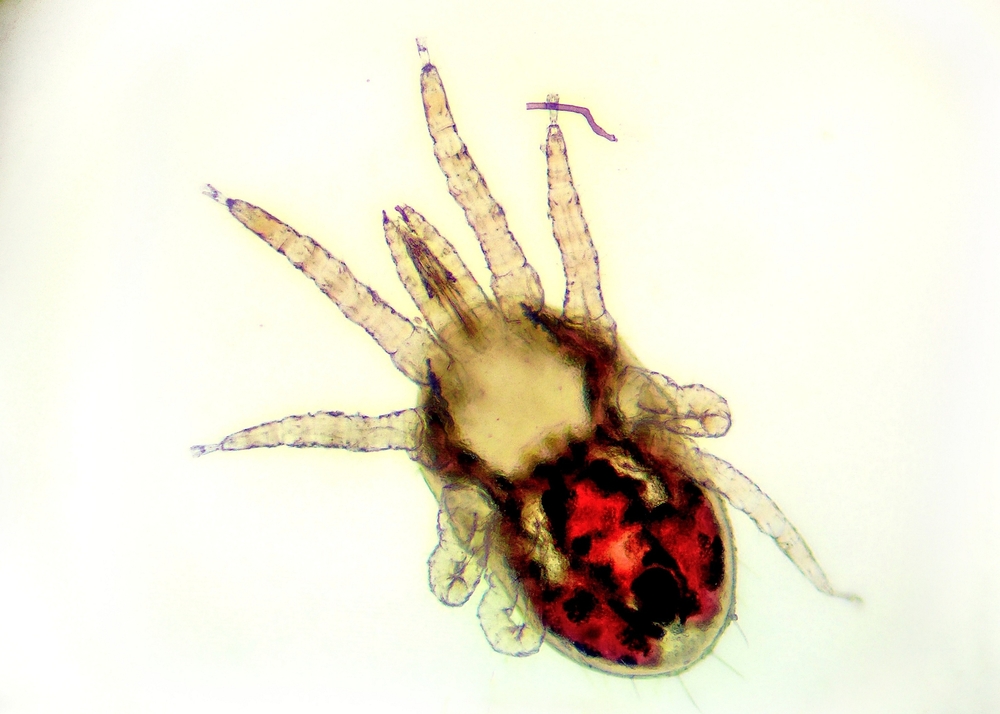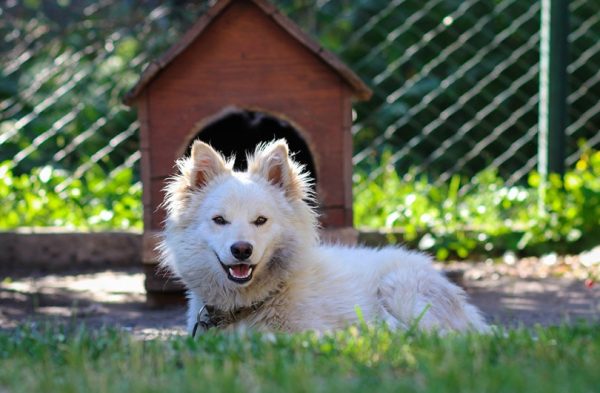In this article
View 2 More +Bird mites are parasites found in wild birds and poultry. They are generally brown or grayish in color and turn darker after feeding. These mites are small yet visible and can even bite canines and humans.
Now that may leave you wondering if bird mites can live on your dog. While rare, there have been a few reports of bird mites infesting dogs and other mammals.1 Let’s explore bird mites more in-depth so you know what to look for and what to do should you come in contact with these parasites.

Common Types of Bird Mites
Bird mites are roughly 1/32 of an inch long. There are two main types: northern fowl mites (Ornithonyssus sylviarum) and chicken mites (Dermanyssus gallinae).
- Ornithonyssus sylviarum normally live on various domestic and wild birds, including poultry, starlings, pigeons, sparrows, and robins. They will live on the birds and complete their entire life cycles in the host, meaning that they reproduce and lay their eggs in the feathers.
- Dermanyssus gallinae’s life cycle is different in that they do not spend all their life cycles on a host. Instead, they lay eggs in cracks, crevices, litter, or other areas where they hide.

How Do Dogs Come in Contact With Bird Mites?
Pet birds, such as parrots and canaries, can bring these mites inside the home. Bird mites will look for another host if the affected bird dies or an infested nest is abandoned, which means pet birds are at risk if taken outside. The mites can live for weeks without a blood meal, and they will bite you or your dog in search of food.
So, if you own a pet bird and a dog, bird mites can come in contact with your canine via your bird if they choose it as a host. Bringing in injured or sick birds can also put your pets at risk of bird mite transmission.
Chicken mites can easily enter your home from unprotected eaves, broken roof tiles, attics, chimneys, and window awnings. These mites are active during the spring and summer months, and they love warm weather. If you spot these annoying parasites, you’ll want to enlist the help of pest control to get rid of them.
The poultry red mite, Dermanyssus gallinae, has demonstrated a level of adaptability and plasticity by feeding on various alternative hosts, including rodents, rabbits, horses, dogs, and even humans. They have been implicated in transmitting several zoonotic illnesses too, so caution should be taken.
How to Keep Your Dog Safe From Bird Mites
To help prevent bird mites on dogs it’s important to stay up to date with flea and tick prevention, and calling a pest control company as soon as you notice them inside your home will help rid your home of these pesky parasites.
Remove any dead birds you may find in your yard or anywhere else on your property. Remember that when an infested bird dies, these mites set out on a quest for a new host.
Consulting a veterinarian is recommended for the best course of action.
Did you know you can speak to a veterinarian without having to travel? Just head over to PangoVet. It's our online service where you can talk to a vet online and get the advice you need for your pet — all at an affordable price!


Conclusion
Bird mites usually complete their life cycles by feeding and living on birds, but they can also bite you and your dog. If you notice them in or around your home, you will want to get rid of them as soon as possible to avoid bites. A bird mite bite can cause irritation, itching, pain, skin that’s warm to the touch, and a discharge from the bite site—all of which are unpleasant. However, the biggest concern is the fact that mites can act as vectors of zoonotic diseases.
If you suspect that your dog has been bitten by something and has irritation, it’s a good idea to have your pup checked out by a veterinarian to rule out fleas or some other problem, such as fleas or Demodex mites.
See also:
- Is Snail Bait Safe for Dogs? Vet-Reviewed Safety Tips
- Canine Nasal Mites in Dogs: Signs, Causes & Treatment
Featured Image Credit: schubbel, Shutterstock




















